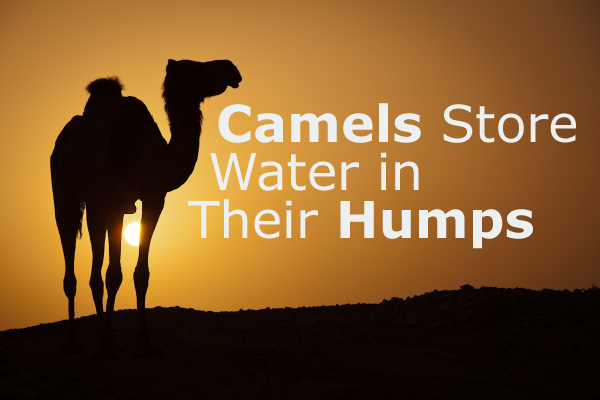
Camels are remarkable creatures that are well-known for their ability to survive in harsh desert conditions. One of the most common myths about camels is that they store water in their humps. But is this true?
What is a Camel's Hump?
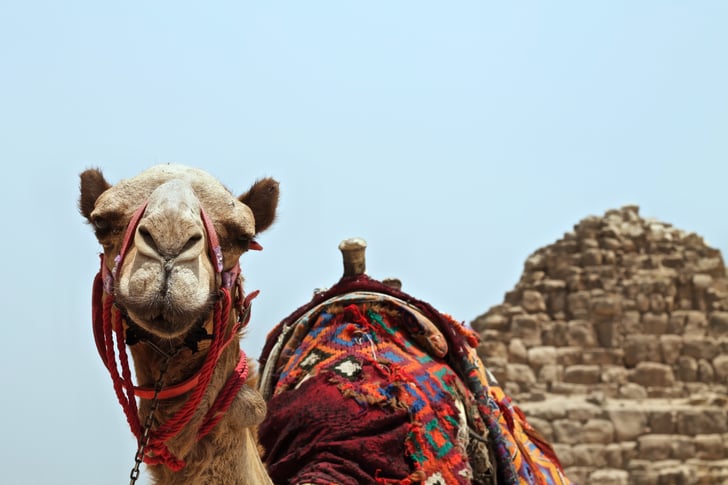
Camels have one or two humps on their back, depending on the species. These humps are actually not filled with water, but with fat. The fat is a source of energy for the camel when food and water are scarce. As the camel uses up the fat in its humps, they become smaller and saggy.
How Do Camels Survive in the Desert?

Camels are well-adapted to life in the desert. They have several physical and behavioral adaptations that help them survive in the harsh desert environment. For example, their nostrils can be closed to prevent sand from entering, and their thick fur helps to insulate them from the hot sun during the day and the cold desert nights.
Camels are also able to conserve water by producing very concentrated urine and dry feces. They can go for long periods of time without drinking water, relying on the moisture from the plants they eat to sustain them.
Do Camels Need Water?

While camels are able to survive for long periods of time without water, they do need to drink eventually. When they do find water, they are able to drink large amounts very quickly, up to 30 gallons at a time! They are also able to store water in their bloodstream, allowing them to go longer without drinking.
Conclusion
Camels are truly amazing creatures that have evolved to survive in some of the harshest environments on earth. While they do not store water in their humps, they are able to conserve water and survive for long periods of time without drinking. So the next time you see a camel, remember that their humps are not water tanks, but fat storage units!
Related video of Do Camels Store Water?

It's a common question asked by many people, and the answer may surprise you. Do birds have penises? The answer is not as straightforward as you might think, and it varies depending on the species of bird.
Birds Without Penises
Believe it or not, some male birds do not have penises. These birds, such as ducks, geese, and swans, have a cloaca, which is a single opening used for reproduction, excretion, and laying eggs. During mating, the male bird will press his cloaca against the female's cloaca to transfer sperm.
Other birds, like ostriches and emus, have a similar reproductive system, but their cloaca is much larger and more complex. Male ostriches and emus have a phallus-like structure that protrudes from their cloaca during mating, but it's not technically a penis.
Birds With Penises

Some male birds do have penises, but they are not what you might expect. The penis of a bird is not a separate organ, but rather an extension of the cloaca. It's called a phallus, and it's found in some species of birds, including ducks, ostriches, and some species of songbirds.
The phallus is used during mating to transfer sperm to the female's reproductive tract. It can vary in size and shape depending on the species of bird, and some birds, like the Argentine lake duck, have particularly elaborate phalluses.
Why Don't All Birds Have Penises?

The reason why some birds have penises while others do not is not entirely clear. It's thought to be related to the evolutionary history of each species and their unique reproductive strategies.
There are a few possible explanations for why some birds have lost their penises over time. One theory is that it's an adaptation to reduce the weight of the male bird, making it easier for them to fly. Another theory is that it's a way to reduce the risk of injury during mating, as male birds with penises are more susceptible to injury during copulation.
Conclusion
So, do birds have penises? The answer is yes and no. Some birds have a phallus-like structure called a phallus that extends from their cloaca, while others have a single opening called a cloaca that is used for reproduction, excretion, and laying eggs.
The diversity of reproductive systems in birds is a fascinating topic of study, and scientists are still learning new things about these amazing creatures every day.
Related video of Do Birds Have Penises?
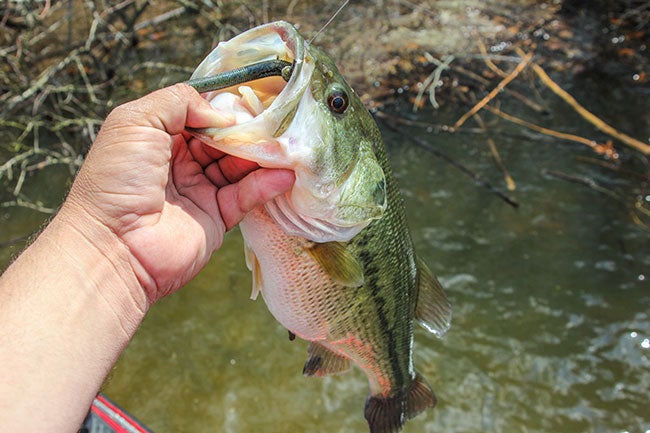
Bass fishing is a popular recreational activity, and one of the most commonly asked questions is whether or not bass eat worms. The answer is yes, bass do eat worms, and they are one of the most effective baits for catching them.
What Types of Worms Do Bass Eat?

There are several types of worms that bass will eat, but the most popular are red wigglers, nightcrawlers, and earthworms. These worms can be found at most bait and tackle shops, and they are relatively inexpensive.
Red wigglers are a popular choice because they are easy to handle and are very active in the water. Nightcrawlers are larger and can be a bit messier to handle, but they are also very effective. Earthworms are another popular option, but they are not as active in the water as red wigglers or nightcrawlers.
How to Rig a Worm for Bass Fishing

When rigging a worm for bass fishing, there are several different options. The most popular method is the Texas Rig, which involves inserting the hook through the worm and then burying it in the body. This makes the worm weedless and helps it to float naturally in the water.
The Carolina Rig is another popular option, which involves using a long leader and a weight to keep the worm near the bottom of the water. This is a great option for fishing in deeper water or areas with a lot of vegetation.
When to Use Worms for Bass Fishing

Worms are a great bait for bass fishing, but they are not always the best option. They are most effective in the spring and fall when the water temperature is between 50 and 70 degrees Fahrenheit. During the summer months, bass tend to be more active and may prefer other types of bait.
Worms are also a great option for fishing in ponds or small lakes where the water is clear and there is a lot of vegetation. They can be used in larger bodies of water, but they may not be as effective in areas with a lot of current or deep water.
Tips for Using Worms for Bass Fishing
When using worms for bass fishing, there are a few tips that can help increase your chances of success. First, make sure to use a sharp hook and set it quickly when you feel a bite. Bass have a tendency to swallow their prey whole, so it's important to set the hook before they have a chance to do so.
Second, vary the speed and depth of your retrieve to find what works best for the particular body of water you are fishing in. Bass tend to be more active in the early morning and late afternoon, so these are great times to try using worms as bait.
Finally, pay attention to the weather and water conditions. Bass tend to be more active in cloudy or overcast conditions, and they may be more likely to bite when the water is slightly cooler or warmer than usual.
Conclusion
In conclusion, bass do eat worms, and they are one of the most effective baits for catching them. There are several types of worms that can be used for bass fishing, and they can be rigged in a variety of ways. When using worms for bass fishing, it's important to pay attention to the weather and water conditions, and to vary the speed and depth of your retrieve to find what works best.
Related video of Do Bass Eat Worms?

Music is a universal language that can evoke emotions in humans. It has the power to make us feel happy, sad, or even relaxed. But what about animals? Do they react to music in the same way that humans do?
Animals and Sound

Animals rely on sound for communication, navigation, and even hunting. They are highly attuned to their environment and can detect sounds that humans cannot. For example, dogs can hear frequencies four times higher than those heard by humans.
Studies have shown that animals can also differentiate between different types of sounds. For example, birds can recognize different bird songs and respond accordingly. Similarly, dolphins use clicks and whistles to communicate with each other.
Animals and Music

While animals may be sensitive to sound, it is unclear whether they can appreciate music in the same way that humans do. Some studies suggest that animals may respond to music, while others do not.
For example, a study conducted by the Scottish Society for the Prevention of Cruelty to Animals (SPCA) found that dogs in a shelter were less stressed when they listened to classical music. Similarly, a study by researchers at the University of Wisconsin found that cows produced more milk when they listened to calming music.
However, other studies have found that animals do not respond to music in the same way that humans do. For example, a study by the University of California, Davis found that monkeys did not show any preference for music over silence.
Why Do Some Animals Respond to Music?
While it is unclear why some animals respond to music, it is possible that it has to do with the way their brains process sound. Animal brains may be wired differently than human brains, which could affect how they perceive music.
Additionally, animals may respond to music simply because it is a new and interesting stimulus. This is similar to how dogs may become excited when they hear a new sound or smell a new scent.
Conclusion
While there is still much to learn about how animals perceive music, it is clear that they are highly attuned to sound. Some animals may respond to music in the same way that humans do, while others do not. Regardless, it is important to remember that animals are living beings with their own unique personalities and preferences. If you want to play music for your pets, it is best to observe their reactions and adjust accordingly.
Related video of Do Animals React To Music?
When it comes to the reproductive anatomy of female mammals, there are many similarities and differences. One of the most common questions that people ask is whether all female mammals have a clitoris. The answer is yes, they do!
What is a Clitoris?
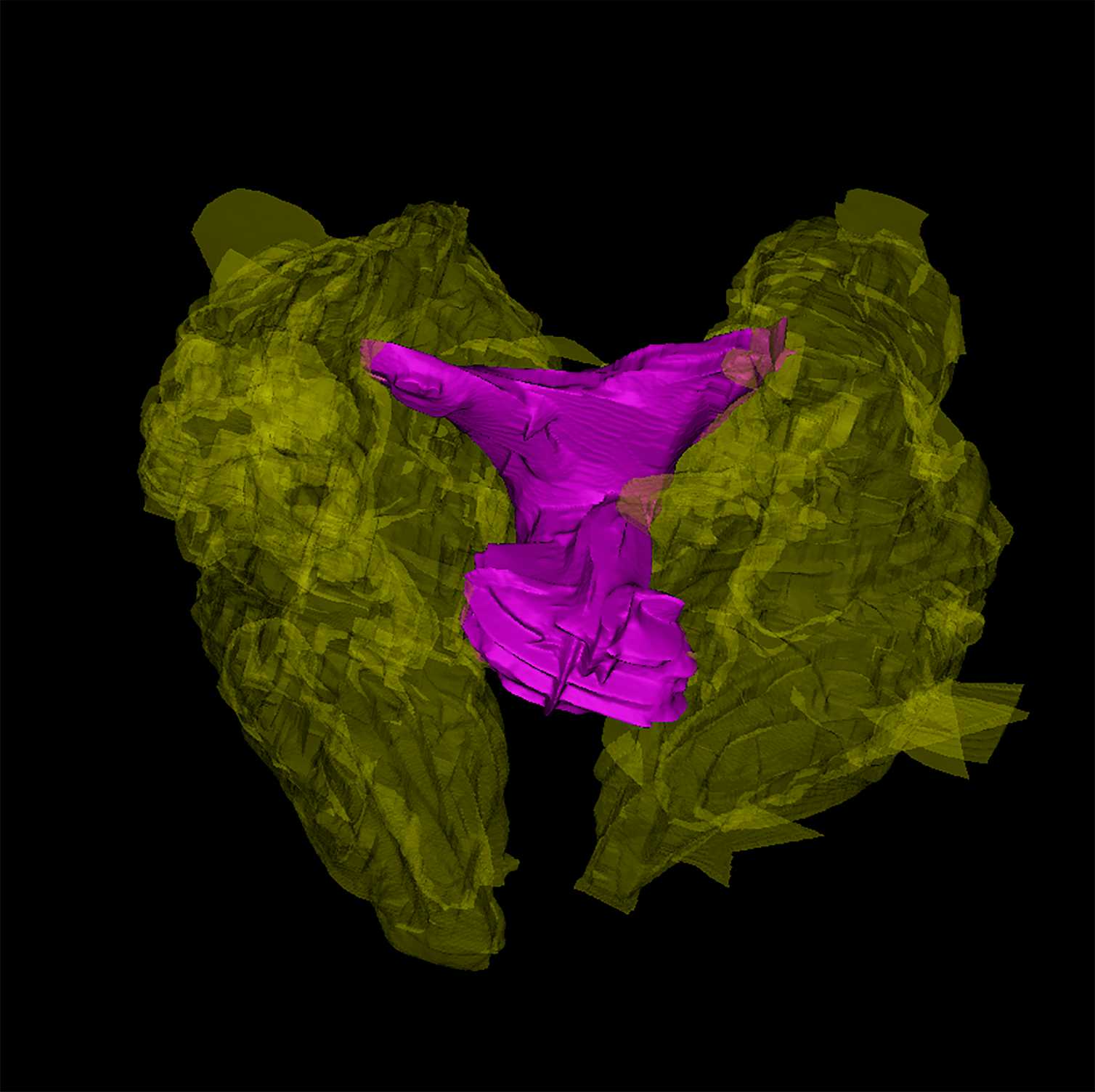
The clitoris is a small, highly sensitive organ located at the front of the vulva in female mammals. It is an erectile tissue, similar to the penis in males, and is responsible for sexual arousal and orgasm.
The clitoris is made up of two main parts: the glans, which is the visible, external part of the clitoris, and the shaft, which is the internal part of the clitoris that extends into the body.
Clitoris in Different Mammals

Although all female mammals have a clitoris, the size, shape, and location of the clitoris can vary greatly between different species.
For example, in humans, the clitoris is a small, highly sensitive organ located at the front of the vulva. In some other primates, such as chimpanzees and bonobos, the clitoris is also highly visible and prominent.
However, in other mammals, such as dogs, cats, and rabbits, the clitoris is much less visible, and is often located inside the body.
Functions of the Clitoris
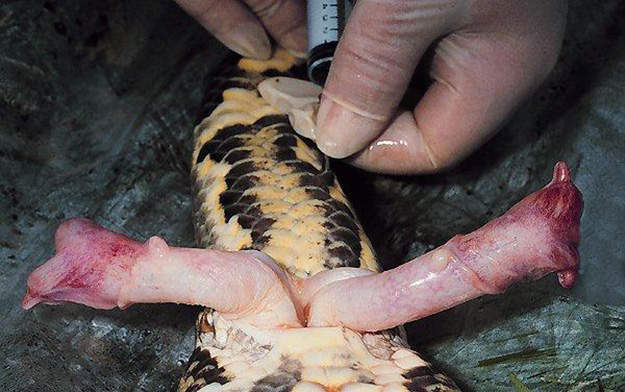
The clitoris is an important part of female sexual anatomy, and is responsible for sexual arousal and orgasm.
When a female mammal is sexually stimulated, blood flow to the clitoris increases, causing it to become erect and highly sensitive. This can lead to sexual pleasure and orgasm, which can help to strengthen the bond between mating partners, and increase the likelihood of reproduction.
Conclusion
So, the answer to the question "Do all female mammals have a clitoris?" is yes. However, the size, shape, and location of the clitoris can vary greatly between different species, and its functions may differ slightly.
Understanding the reproductive anatomy of female mammals, including the clitoris, can help us to better understand their behavior and reproductive strategies.
Related video of Do All Female Mammals Have A Clitoris

Paramount Pictures is an American film studio, founded in 1912. It is one of the oldest film studios in the world, and is known for producing many iconic films over the years. One of the most important aspects of the studio's success is its distribution network, which is managed under the name "Distributed By Paramount Pictures".
What is "Distributed By Paramount Pictures"?
"Distributed By Paramount Pictures" is the name under which Paramount Pictures distributes its films. Essentially, it is the distribution arm of the studio, responsible for getting films into cinemas and onto home video platforms. This is an important part of the film-making process, as it ensures that the films produced by Paramount Pictures are seen by as many people as possible.

How does distribution work?
The distribution process starts when a film is completed. The film is then delivered to the distribution company, in this case, "Distributed By Paramount Pictures". The distribution company then works with cinemas and other outlets to get the film shown to audiences.
The distribution company will negotiate with cinemas to secure a release date and screen time for the film. They will also work with home video platforms, such as DVD and Blu-ray, to ensure that the film is available for purchase or rental.
Why is distribution important?
Distribution is a crucial part of the film-making process. Without a good distribution network, films can struggle to find an audience. The distribution company is responsible for getting the film in front of as many people as possible, which can be a difficult task. It requires a lot of negotiation and hard work, but it is essential if a film is to be successful.

Paramount Pictures' history of distribution
Paramount Pictures has a long history of successful distribution. Some of the most iconic films in history have been distributed by the studio, including "The Godfather", "Forrest Gump", and "Titanic".
The studio has also been innovative in its distribution approach. In 1942, it introduced the first ever film trailer for a film called "For Whom the Bell Tolls". This was the start of the trailer as we know it today. The studio has also been a pioneer in home video distribution, with its Paramount Home Entertainment division launching in 1976.
Paramount Pictures today
Today, Paramount Pictures is still going strong, with a focus on producing big-budget films and franchises. The studio is responsible for films such as "Mission: Impossible", "Transformers", and "Star Trek".
"Distributed By Paramount Pictures" is still an important part of the studio's success. The distribution arm ensures that these big-budget films are seen by as many people as possible, helping to make them box office hits.
Conclusion
Distribution is a crucial part of the film-making process, and it is something that Paramount Pictures has excelled at for over a century. "Distributed By Paramount Pictures" is the name under which the studio distributes its films, and it is a key part of the studio's success. Without a good distribution network, even the best films can struggle to find an audience.
Related video of Distributed By Paramount Pictures
One of the most important aspects of baseball is the distance between home plate and the pitcher's mound. This distance plays a crucial role in the game, as it determines the level of difficulty for the pitcher and the batter. In this article, we will discuss the distance between home plate and the pitcher's mound, its history, and its impact on the game of baseball.
History of the Distance Between Home Plate and Pitcher's Mound

The distance between home plate and the pitcher's mound has not always been the same. In the early days of baseball, the distance was not standardized, and it varied from one field to another. However, in 1893, the distance was officially set at 60 feet and 6 inches. This distance has remained unchanged ever since.
The reason why the distance was fixed at 60 feet and 6 inches is not clear. Some sources suggest that it was based on the average distance between the pitcher's rubber and home plate at the time. Others believe that it was simply a compromise between various baseball leagues to standardize the game.
Impact of the Distance on the Game of Baseball

The distance between home plate and the pitcher's mound has a significant impact on the game of baseball. It is the distance that determines the level of difficulty for the pitcher and the batter. The farther the pitcher's mound is from home plate, the more difficult it is for the pitcher to throw the ball with speed and accuracy. Similarly, the closer the pitcher's mound is to home plate, the easier it is for the batter to hit the ball.
However, the distance is not the only factor that affects the game. Other factors such as the height of the mound, the type of pitch, the pitcher's technique, and the batter's skill also play a crucial role.
Regulation of the Distance Between Home Plate and Pitcher's Mound
The distance between home plate and the pitcher's mound is regulated by various baseball organizations such as Major League Baseball (MLB) and the International Baseball Federation (IBAF). These organizations ensure that the distance is consistent across all levels of play and that it complies with the official rules of the game.
Any changes to the distance must be approved by these organizations and must take into account various factors such as the safety of the players, the integrity of the game, and the fairness of the competition.
Conclusion
The distance between home plate and the pitcher's mound is an essential aspect of baseball. It has a significant impact on the game and is regulated by various baseball organizations. Although the distance has remained unchanged for over a century, it is essential to ensure that it continues to meet the needs of the game and its players.
Related video of Distance Between Home Plate And Pitcher's Mound

Disneyland and Disney World are two of the most famous and visited theme parks in the world. One of the most iconic features of both of these theme parks is their magnificent castles. The Disneyland Castle and the Disney World Castle are both breathtaking structures that are sure to captivate visitors of all ages. However, there are some key differences between these two castles that are worth noting.
The Disneyland Castle
The Disneyland Castle is located in Anaheim, California and is the centerpiece of Disneyland Park. This castle was modeled after the Neuschwanstein Castle in Germany and stands at a height of 77 feet. The castle is surrounded by a moat and features four different turrets, each of which is adorned with a different Disney character.
The interior of the Disneyland Castle features a walkthrough attraction that takes visitors on a journey through the story of Sleeping Beauty. The castle also serves as the backdrop for the nightly fireworks show that takes place at Disneyland Park.
The Disney World Castle
The Disney World Castle, also known as Cinderella Castle, is located in Orlando, Florida and is the centerpiece of Magic Kingdom Park. This castle was modeled after the Château de Chambord in France and stands at a height of 189 feet.
The interior of the Disney World Castle features a restaurant called Cinderella's Royal Table, where visitors can dine with Disney Princesses. The castle also serves as the backdrop for the nightly fireworks show that takes place at Magic Kingdom Park.
The Differences

While both the Disneyland Castle and the Disney World Castle are stunning structures, there are some key differences between the two. The most obvious difference is their size, with the Disney World Castle towering over the Disneyland Castle. The Disney World Castle is also home to a restaurant, while the Disneyland Castle features a walkthrough attraction.
Another difference between the two castles is their location within the park. The Disneyland Castle is located at the entrance of Disneyland Park, while the Disney World Castle is located at the center of Magic Kingdom Park. This difference in location gives each castle a unique perspective and feel.
Which Castle is Better?

The question of which castle is better is a subjective one and ultimately comes down to personal preference. Some visitors may prefer the smaller, more intimate feel of the Disneyland Castle, while others may prefer the grandeur and size of the Disney World Castle.
Regardless of which castle you prefer, one thing is certain: both the Disneyland Castle and the Disney World Castle are iconic structures that are sure to leave a lasting impression on visitors of all ages.
Conclusion
In conclusion, the Disneyland Castle and the Disney World Castle are two of the most iconic structures in the world of theme parks. While there are some key differences between these two castles, both are stunning and well worth a visit. Whether you're a fan of the smaller, more intimate feel of the Disneyland Castle or the grandeur and size of the Disney World Castle, one thing is certain: both castles are sure to captivate and enchant visitors of all ages.
Related video of Disneyland Castle Vs Disney World Castle

For years, fans of Disney movies have been fascinated by the idea of a Disney family tree. The theory suggests that all of the Disney characters are connected in some way, forming a complex web of relationships that spans across different movies and franchises. While the theory has never been officially confirmed by Disney, there are plenty of clues and Easter eggs in the movies that seem to support it.
The Foundations of the Theory

The Disney family tree theory is based on a few key ideas. First, it assumes that all of the movies take place in the same universe, even if they are set in different times and locations. Second, it suggests that the characters in the movies are related to each other in some way, either through bloodlines or through other connections. Finally, it posits that there are certain characters that hold a special place in the Disney universe, serving as the linchpins that tie all of the other characters together.
The Key Characters

According to the Disney family tree theory, there are a few key characters that are particularly important in connecting all of the other characters together. These characters include Mickey Mouse, Tinker Bell, and Merlin. Mickey Mouse is the most obvious of these characters, as he is the face of Disney and has appeared in countless movies and TV shows. Tinker Bell is another important character, as she is a fairy that has been shown to appear in multiple movies and has connections to many other Disney characters. Finally, Merlin is a wizard that has appeared in several movies, including The Sword in the Stone and The Little Mermaid.
The Connections Between Characters

One of the most fascinating aspects of the Disney family tree theory is the connections that exist between different characters. For example, it is suggested that the witch from Snow White and the Seven Dwarfs is actually the Evil Queen from Sleeping Beauty, and that Ursula from The Little Mermaid is actually a sister of the Evil Queen. Similarly, it is suggested that the Beast from Beauty and the Beast is actually a descendant of King Triton from The Little Mermaid. There are also many other connections that have been suggested, such as the idea that the characters in Frozen are related to the characters in Tangled.
The Importance of Easter Eggs

While the Disney family tree theory has never been officially confirmed, there are many Easter eggs and hidden references in the movies that seem to support it. For example, in The Little Mermaid, there is a scene where a character is reading a book that features a picture of Belle from Beauty and the Beast. Similarly, in Tangled, there is a scene where Rapunzel and Flynn Rider attend a party that is attended by several other Disney characters, including Mickey Mouse and Cinderella.
The Future of the Disney Family Tree Theory

While the Disney family tree theory is a fascinating idea, it is unlikely that Disney will ever officially confirm or deny it. However, fans will continue to speculate and look for hidden connections between their favorite Disney characters. As new movies are released and new Easter eggs are discovered, the theory will continue to evolve and grow, adding new layers of complexity and intrigue to the Disney universe.
Conclusion
The Disney family tree theory is a fun and interesting idea that has captured the imagination of Disney fans around the world. While it may never be officially confirmed, the theory has inspired countless discussions and debates among fans, and has added a new level of depth and complexity to the Disney universe. Whether you believe in the theory or not, there is no denying that it is a fascinating idea that will continue to captivate fans for years to come.
Related video of Disney Family Tree Theory: The Hidden Connections Between Disney Characters

Introduction
Dirty Harry is a popular American movie series that revolves around the character of Detective Harry Callahan, portrayed by Clint Eastwood. The series has gained a massive following for its portrayal of a tough cop who is willing to do whatever it takes to bring criminals to justice. In this article, we will be discussing the Dirty Harry movies in order.
Dirty Harry (1971)

Dirty Harry is the first movie in the series and was released in 1971. The movie is set in San Francisco and follows Harry Callahan as he tries to track down a serial killer who calls himself Scorpio. The movie was a commercial success and established Clint Eastwood as a leading action star.
Magnum Force (1973)

Magnum Force is the second movie in the Dirty Harry series and was released in 1973. The movie follows Harry Callahan as he investigates a group of vigilante cops who are taking the law into their own hands. The movie was also a commercial success and was praised for its action sequences.
The Enforcer (1976)

The Enforcer is the third movie in the Dirty Harry series and was released in 1976. The movie follows Harry Callahan as he investigates a terrorist group that is threatening to blow up San Francisco. The movie was a commercial success but was criticized for its portrayal of women.
Sudden Impact (1983)

Sudden Impact is the fourth movie in the Dirty Harry series and was released in 1983. The movie follows Harry Callahan as he investigates a series of murders that are linked to a rape that occurred years earlier. The movie was a commercial success and introduced the famous catchphrase "Go ahead, make my day."
The Dead Pool (1988)

The Dead Pool is the fifth and final movie in the Dirty Harry series and was released in 1988. The movie follows Harry Callahan as he investigates a series of murders that are linked to a celebrity game that predicts who will die next. The movie was a commercial success but received mixed reviews.
Conclusion
The Dirty Harry movies have become a cult classic and have a massive fan following. The movies are known for their action sequences and portrayal of a tough cop who is willing to do whatever it takes to bring criminals to justice. If you haven't watched the Dirty Harry movies yet, it's time to grab some popcorn and start binge-watching!
Related video of Dirty Harry Movies In Order
When we think of the ingredients that make up our food, we often overlook one of the most common substances found in it: dihydrogen monoxide. Also known as DHMO, dihydrogen monoxide is a colorless, odorless, and tasteless compound that is essential to life on Earth. However, there is some controversy surrounding its use in our food, and many people are concerned about its potential health effects.
What is Dihydrogen Monoxide?

Dihydrogen monoxide is another name for water, which is made up of two hydrogen atoms and one oxygen atom. It is the most abundant substance on Earth and is found in all living organisms. Water is essential for many biological processes, such as digestion, transportation of nutrients, and regulation of body temperature.
Is Dihydrogen Monoxide Safe?

Water is generally considered safe for consumption and is an essential part of a healthy diet. However, there are some concerns about the quality and safety of the water we drink. Contaminants such as lead, bacteria, and chemicals can make their way into our water supply and pose a risk to our health.
Dihydrogen Monoxide in Food

Dihydrogen monoxide is used in many food products as a solvent, a preservative, and a filler. It is found in fruits and vegetables, as well as in processed foods such as bread, pasta, and canned goods. While there is no evidence to suggest that dihydrogen monoxide is harmful when consumed in the amounts found in food, some people are concerned about its potential health effects.
The Dangers of Dihydrogen Monoxide

There is a growing concern among some people about the potential dangers of dihydrogen monoxide. While this compound is harmless when consumed in small amounts, it can be dangerous in high concentrations. For example, if someone were to inhale large amounts of water in the form of steam, it could lead to respiratory problems such as coughing and wheezing.
Conclusion
Overall, dihydrogen monoxide is a safe and essential compound that is found in all living organisms. While there are some concerns about its use in our food, there is no evidence to suggest that it poses a significant risk to our health. As always, it is important to consume a balanced and varied diet that includes plenty of water and other essential nutrients.